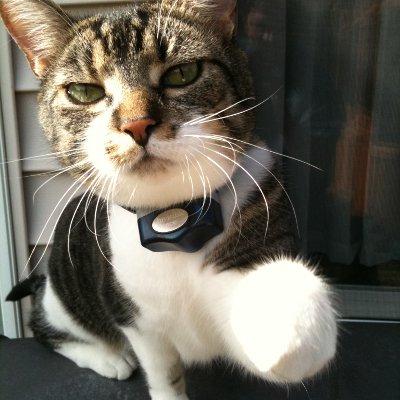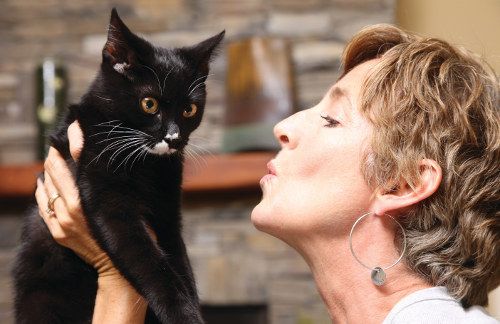 Recent studies of feral cat colonies have discovered something interesting: cats generally don't communicate with each other by meowing (unless they are fighting and growling at each other). Cats in feral colonies rely on body language and subtle movements of their eyes, ears and tails to communicate their intent.
Recent studies of feral cat colonies have discovered something interesting: cats generally don't communicate with each other by meowing (unless they are fighting and growling at each other). Cats in feral colonies rely on body language and subtle movements of their eyes, ears and tails to communicate their intent.
In fact, researchers believe that cats vocalize most often with humans, particularly those they live with as pets and companions. Why? The cats have learned that humans respond to meows, chirps, trills, and other feline vocalizations. And, the meows one cat uses with his family may not be the same as those the cat down the street uses with her family.
But just what is your cat trying to tell you?
Listen Closely.
Chances are you probably already have a general idea what your cat's vocalizations mean. He may use one type of meow when he is hungry and wants you to feed him, and he may use another when you shut the bathroom door and he can't get in. In general, though, cats use the following vocalizations in these typical situations:
-
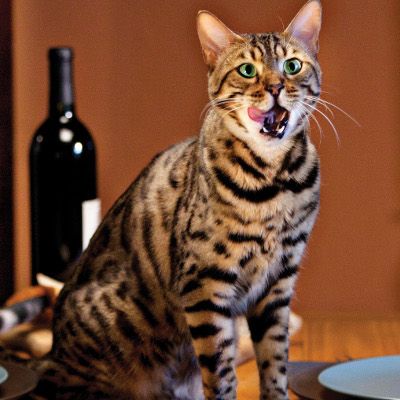 Purring - You likely know that purring is a sign of happiness and contentment in a cat. But did you know that a cat may purr to comfort himself? Researchers have noted that cats recovering from illness or injury may purr as a form of self-soothing.
Purring - You likely know that purring is a sign of happiness and contentment in a cat. But did you know that a cat may purr to comfort himself? Researchers have noted that cats recovering from illness or injury may purr as a form of self-soothing. - Chattering - This rapid fire sound, usually made when a cat is excited by something (such as a bird he says out the window), is thought to be related to a predatory behavior used by cats when they hunt in the wild.
- Mewing, meowing, chirping - Some cats are chattier than others, and those "talkers" likely keep up a stream of mews, meows and chirps that sound friendly and almost conversational. Your talkative cat likely enjoys your company and wants your attention--and he probably knows from experience that you will respond to his attempts to "talk" to you. Over time you may learn that certain meows seem to mean certain things, such as one particular meow when he wants you to feed him.
- Growling, hissing and spitting - The universal feline language for "Leave me alone," these sounds generally speak for themselves. If your cat growls, hisses or spits, he is angry, upset or frightened and should be approached cautiously.
Read Your Cat's Body Language.
Your cat communicates as much through his body language as he does through his meows, purrs and chirps. A lashing tail means one thing, while flattened ears can mean another. Pay attention to these cues from the movements of your cat's eyes, ears, tail and body.
Eyes - They say the eyes are the window to the soul, and a cat definitely conveys his feelings with his eyes. A long, slow blink, means your cat feels comfortable enough with the humans in the room to close his eyes, while partially dilated pupils can indicate that he feels nervous or submissive. Fully dilated pupils mean the cat is aggressive. If you're trying to catch an unfamiliar cat's gaze and he keeps looking away, it's because most cats find a direct look threatening.
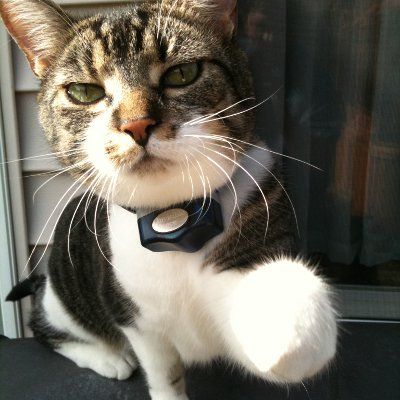
Ears - Ever notice how your cat's ears seem to be one of the most expressive parts of his body? When a cat holds his ears forward and upright, he is content and most likely interested in what is going on around him. If the ears are upright and swiveling, he is alert and attentive to his surroundings. Ears held backward, sideways or flat indicate that a cat is irritable, angry or frightened.
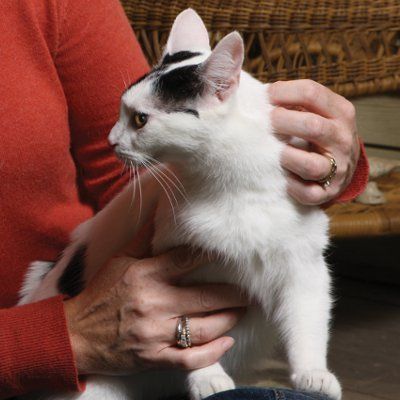
Tail - Just as expressive as your cat's ears (and maybe even moreso), a cat's tail is a good barometer of his current mood. When your cat holds his tail up high with the fur flat, he most likely feels confident and alert. If the same upright tail has fur that looks poofed out like a bottlebrush, the cat is afraid or feels threatened. When your cat wraps a tail around your legs, it means he likes you and is in a way "claiming" you as his own. If the tail is tucked up between the cat's legs, he most likely feels anxious or insecure about his surroundings.
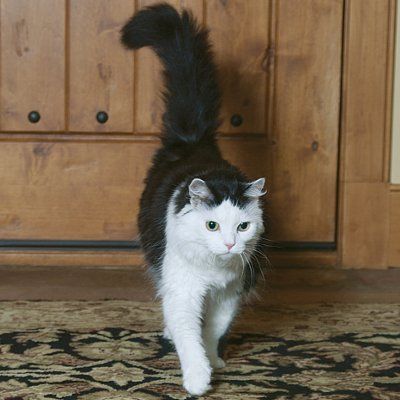
Body - Your cat's entire body can communicate his feelings and intentions, too. When he lays on his back and purrs, he is content and happy. The same posture combined with growling is the cat's way of telling you to stay away: He feels upset and has taken on a defensive posture. An angry or frightened cat may also arch his back, with his fur standing on end. But if he arches his back up toward your hand, and his fur is flat against his body, he is welcoming your touch.
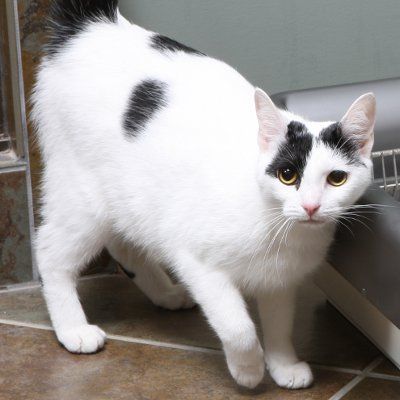
Notice Other Behaviors.
 Your cat may try to talk to you with other behaviors, too. If he rubs his head, chin and body up against you, yes, he is happy to see you, but he is also making sure all other cats, dogs and animals know that you belong to him. He has scent glands in his chin and body that transfer his scent to your clothes, marking you as part of his territory.
Your cat may try to talk to you with other behaviors, too. If he rubs his head, chin and body up against you, yes, he is happy to see you, but he is also making sure all other cats, dogs and animals know that you belong to him. He has scent glands in his chin and body that transfer his scent to your clothes, marking you as part of his territory.
When your cat kneads his paws, "makes biscuits," or "does the kitty dance," you probably already know that he is completely content and happy. A holdover from when your cat was a nursing kitten, this behavior takes place when your cat feels safe, happy and comforted.

